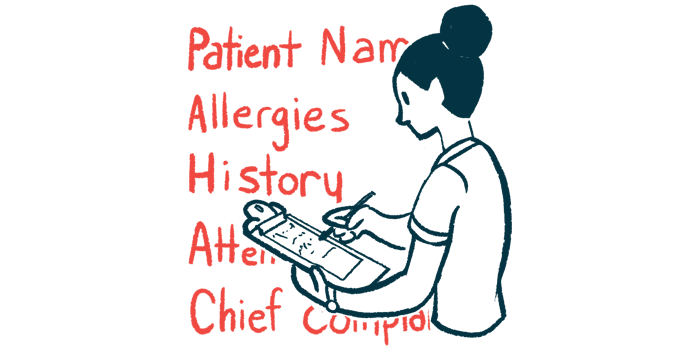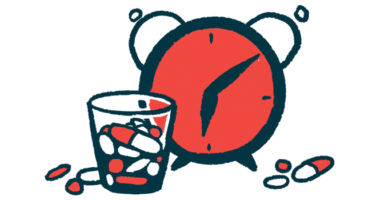Certain Conditions Found to Increase Risk of Angioedema in Older Adults

Excess blood levels of uric acid — a normal body waste product — and Hashimoto’s disease, an autoimmune condition, may increase the risk of angioedema without hives for older adults, according to a study in Poland.
Further studies are needed to confirm these findings and better understand the factors driving the development of this swelling condition in patients older than age 60, the researchers noted.
The study, “Impact of comorbidities on risk of angioedema without urticaria in elderly patients,” was published in the journal Allergy, Asthma & Clinical Immunology.
Angioedema, a condition characterized by swelling under the skin, can be caused by a number of factors, from genetic mutations to allergic reactions and abnormal immune reactions. Tissue swelling may be accompanied or not by hives, called urticaria.
Angioedema without urticaria, known as AWU, can develop in the elderly population, but the presence of simultaneous health conditions — called comorbidities — and use of several medications challenge the identification of contributing factors in patients older than 60.
Now, researchers in Poland evaluated the influence of comorbidities in AWU development among older adults by retrospectively analyzing clinical, medication, and lab data from 242 AWU patients and 263 people without angioedema and/or hives, who served as controls. All were older than 60.
The analysis was based on data taken from Polish geriatric and allergy and primary health outpatient clinic databases between 2004 and 2019. The group of AWU patients did not include those whose condition was suspected or proven to be caused by medications.
The mean age was 68.3 years for the AWU group and 65.9 years for the control group. In both, nearly 60% of these older adults were women and about 45% had two chronic diseases. There were no significant differences between the groups.
Most patients experienced angioedema without hives in the mouth (74%) and had been treated with anti-histamines (90%).
Data showed that in the AWU group, one patient (0.4%) had hereditary angioedema (HAE), a form of angioedema without hives that is caused mainly by the malfunction or lack of a protein called C1-inhibitor (C1-INH) due to genetic mutations.
In addition, slightly lower-than-normal levels of C1-INH were reported in four (1.65%) patients, while C1-INH dysfunction was reported in five (1.76%). Lower levels of the complement C4 protein, a hallmark of HAE, were reported in nine (3.71%) AWU patients, but also in two (0.7%) people in the control group.
None of these AWU patients had more features suggestive of an HAE diagnosis, and were therefore considered more likely to have acquired angioedema, meaning that C1-INH deficiency was driven by non-genetic factors.
The researchers then assessed the potential link between other medical conditions and AWU, after adjusting for potential influencing factors.
Results showed a significantly greater proportion of AWU patients had excess acid uric levels in the blood — called hyperuricemia) — relative to those in the control group (24% vs. 13%). A significant group difference also was observed for the frequency of an autoimmune condition called Hashimoto’s disease (17% vs. 10% in the control group).
Notably, 21 AWU patients had both hyperuricemia and Hashimoto’s, while both conditions were present in only eight people in the control group (9% vs. 3%).
These findings indicated that the risk of AWU was significantly increased — by threefold — in people with hyperuricemia and by nearly twofold among those with Hashimoto’s disease.
A normal waste product, uric acid is formed when the body breaks down purines, which are compounds found in the body’s cells, and in some foods, including liver, shellfish, sardines, and alcohol. The kidneys remove uric acid from the blood as a waste product, and incorporate it into urine to be eliminated from the body.
Uric acid is known to promote blood vessel damage and the production of pro-inflammatory molecules, both of which may lead to blood vessel leakage and inflammatory processes that drive angioedema attacks.
While hyperuricemia is often observed in adults older than 60, this was likely the first report to provide evidence of a potential link between excess uric acid levels and angioedema without hives in this elderly patient population.
In turn, an association between Hashimoto’s disease and angioedema has been previously reported, the team noted.
In Hashimoto’s, the body produces antibodies that wrongly attack cells in the thyroid, a gland that helps regulate the body’s metabolism and other key functions. It is thought that these anti-thyroid antibodies may promote immune and/or inflammatory cascades leading to angioedema.
These findings “may indicate a significant influence of hyperuricemia or Hashimoto’s disease on angioedema manifestations” in the elderly, the researchers wrote, adding that “further prospective studies are needed to confirm these observations.”







